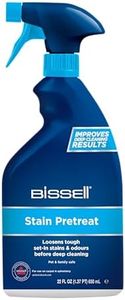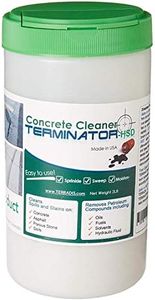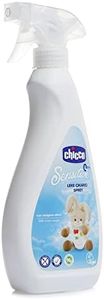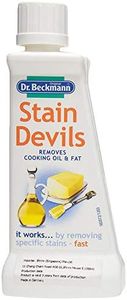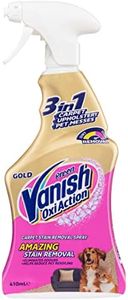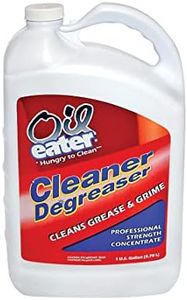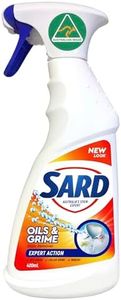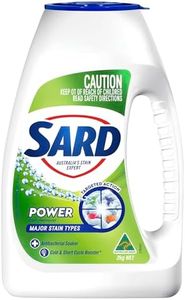We Use CookiesWe use cookies to enhance the security, performance,
functionality and for analytical and promotional activities. By continuing to browse this site you
are agreeing to our privacy policy
10 Best Oil Stain Removers
From leading brands and best sellers available on the web.Buying Guide for the Best Oil Stain Removers
Choosing the right oil stain remover can make the difference between a stubborn stain that returns and a surface that looks like new. Since oil stains can occur on a variety of materials—clothing, concrete, carpets, and more—it’s important to select a remover suited for your specific need. When picking a product, think about what surface you’ll be treating and how severe the stain is. Some removers are designed for quick cleanups, while others tackle deep, old stains or heavy grease. Understanding key features will help ensure you get safe, effective results without damaging the item you’re cleaning.Surface CompatibilitySurface compatibility means the types of materials the oil stain remover can safely be used on—like fabrics, concrete, garage floors, upholstery, or wood. This is important because a remover suited for concrete may contain harsh chemicals that could damage fabrics or delicate carpets. Labels usually specify where it can be used. If you want to treat clothing or indoor soft surfaces, choose products labeled safe for fabrics or multi-surface; for driveways and garages, select removers for hard, exterior surfaces. Knowing exactly what you need to treat will help you avoid surface damage while ensuring proper stain removal.
Type of Cleaner (Solvent vs. Enzyme-Based)Oil stain removers generally fall into two types: solvent-based, which breaks down oil with chemical action, and enzyme-based, which uses natural enzymes or bacteria to digest the oil. Solvents typically work quickly, making them good for tough or fresh stains but can be harsh and have strong odors. Enzyme-based removers are milder, environmentally friendly, and suitable for longer applications or sensitive surfaces. If you’re dealing with delicate materials or prefer a gentle option, enzyme-based may be the way to go, while solvent-based products are good for heavy-duty jobs.
Application MethodApplication method refers to how the remover is used: sprays, gels, powders, or liquids. Sprays are easy for spot treatments and small stains, gels stick to vertical surfaces, powders are often used on concrete and need to be swept up after absorbing the oil, and liquids are versatile but can be messy. For a small or vertical stain, a gel or spray works best so it stays in place; for flat, absorbent surfaces like garage floors, powders or liquids can cover larger areas more effectively.
Stain Age and SeveritySome products are designed for fresh, light stains, while others target old, set-in or deeply embedded oil marks. Fresh stains often require a milder remover, as harsh chemicals might not be necessary. Set-in stains may need stronger formulas or longer treatment times. Think about how long the oil has been there and how deeply it’s penetrated the surface. For everyday spills, fast-acting removers are ideal, but for old, stubborn stains, look for heavy-duty or deep-cleaning formulations.
Safety and OdorSafety concerns both human contact and environmental impact. Some oil stain removers have strong chemical odors or can irritate skin and eyes, requiring gloves or good ventilation. Others are labeled non-toxic, biodegradable, and low-odor, making them safer for indoor use or around pets and children. If you’re working in enclosed spaces, or if anyone in your home has sensitivities, opt for low-odor, non-toxic products to keep the process comfortable and safe.
Ease of Use and Clean-upEase of use includes how simple it is to apply the remover, wait for it to work, and then clean up. Some require minimal work—just spray and blot—while others need scrubbing, multiple applications, or time to dry before sweeping away. If you want something quick and convenient, look for products advertised as ‘no scrub’ or ‘easy clean-up.’ However, intensive treatments may be more effective for tough stains, even if they demand a bit more effort.



